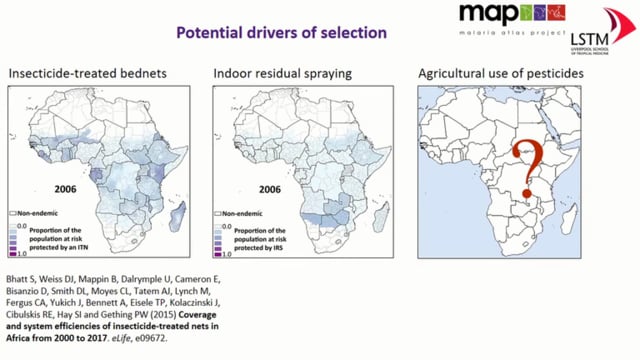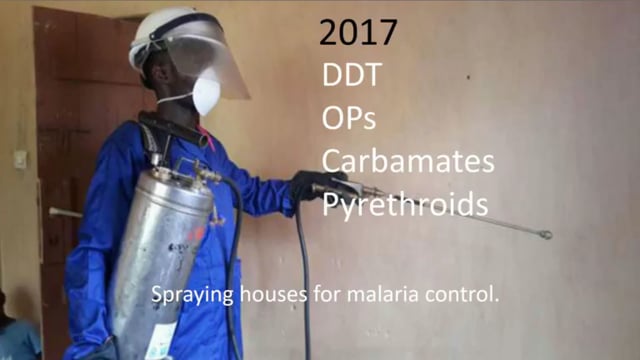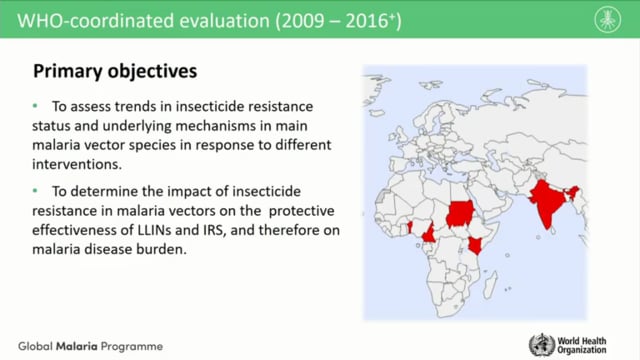ASTMH 2017, Catherine Moyes: “Geospatial Patterns of Insecticide Resistance”
Collaborator(s): University of Oxford, United Kingdom
Published: 08/11/2017
In collaboration with ASTMH, Image Audiovisuals, and session presenters, MESA brings you this webcast from the 66th ASTMH annual meeting in Baltimore, November 2017
Title: “Geospatial Patterns of Insecticide Resistance”
Speaker: Catherine Moyes, University of Oxford
Session information:
Wednesday, 8 November, 10:15 – 12:00 PM, Convention Center – Room 318/319/320 (Level 300)
Abstract:
Indoor residual spraying (IRS) and insecticide treated nets (ITNs) continue to be the frontline of vector control interventions. IRS and ITNs have been scaled up across malaria endemic countries, particularly in sub-Saharan Africa, during the past two decades, which has been associated with a dramatic decline in malaria mortality and morbidity. At the same time, the emergence and rapid spread of resistance to insecticides, which the efficacy of ITNs and IRS are dependent on, presents growing threats to malaria control gains. It is incumbent on all malaria stakeholders to join hands and make concerted efforts to prevent, slow down and mitigate the impact of insecticide resistance before it undermines malaria vector control programs. The first step in resistance management is establishment of strong, reliable and regular entomological monitoring that includes resistance monitoring to best understand the spatial and temporal distribution of vectors and their resistance status at a local level. Drawing on country examples, this symposium will discuss how insecticide resistance monitoring has been built in insecticide-based vector control programs in 13 countries in Africa and empirical data generated from the monitoring has regularly been used to inform vector control programs, particularly IRS. This symposium also explores how some innovative tools have been used to identify genes and mutations responsible for resistance and detect and monitor metabolic resistance, such as specific biochemical substrates and lateral flow simple immune diagnostic tests, which are key to early detection of resistance. The session will discuss how Bayesian model-based geo-statistics have been used to characterize spatiotemporal variation in insecticide resistance of malaria vectors, how outputs from these will be used in further geospatial analyses of the relative influence of different potential drivers of selection for resistance and the impact of insecticide resistance on malaria transmission in the context of current interventions. The Global Plan for Insecticide Resistance Management launched by World Health Organization in 2012 recommends pre-emptive rotation of insecticides to help preserve the limited public health insecticides available for use in the horizon. However, thus far, there are very limited experiences around pre-emptive rotation and management resistance in malaria vector control. In this symposium, attendees will learn state-of-the-art approaches for evaluating new tools for mitigating the impact of resistance in malaria vectors.
THEMES: Insecticide Resistance


